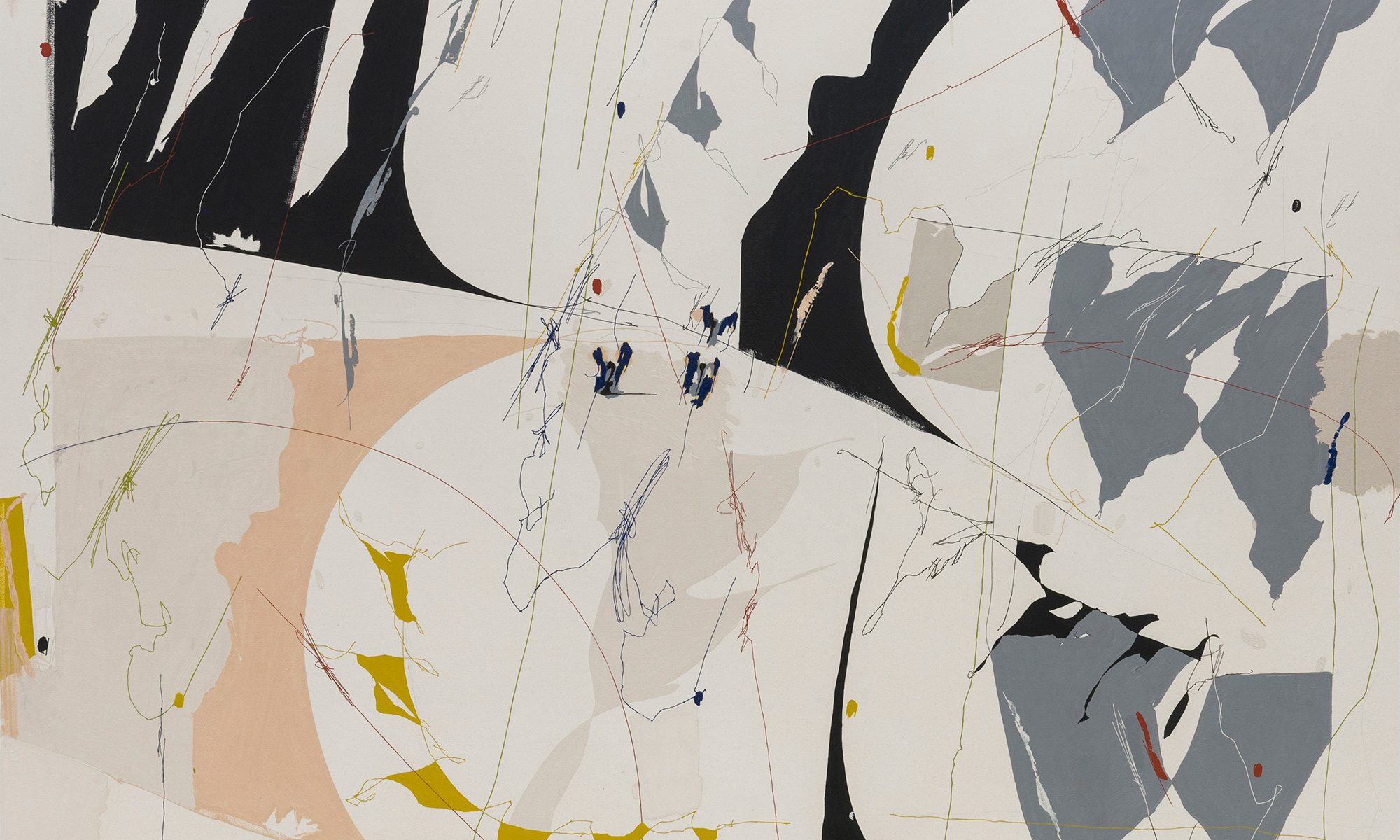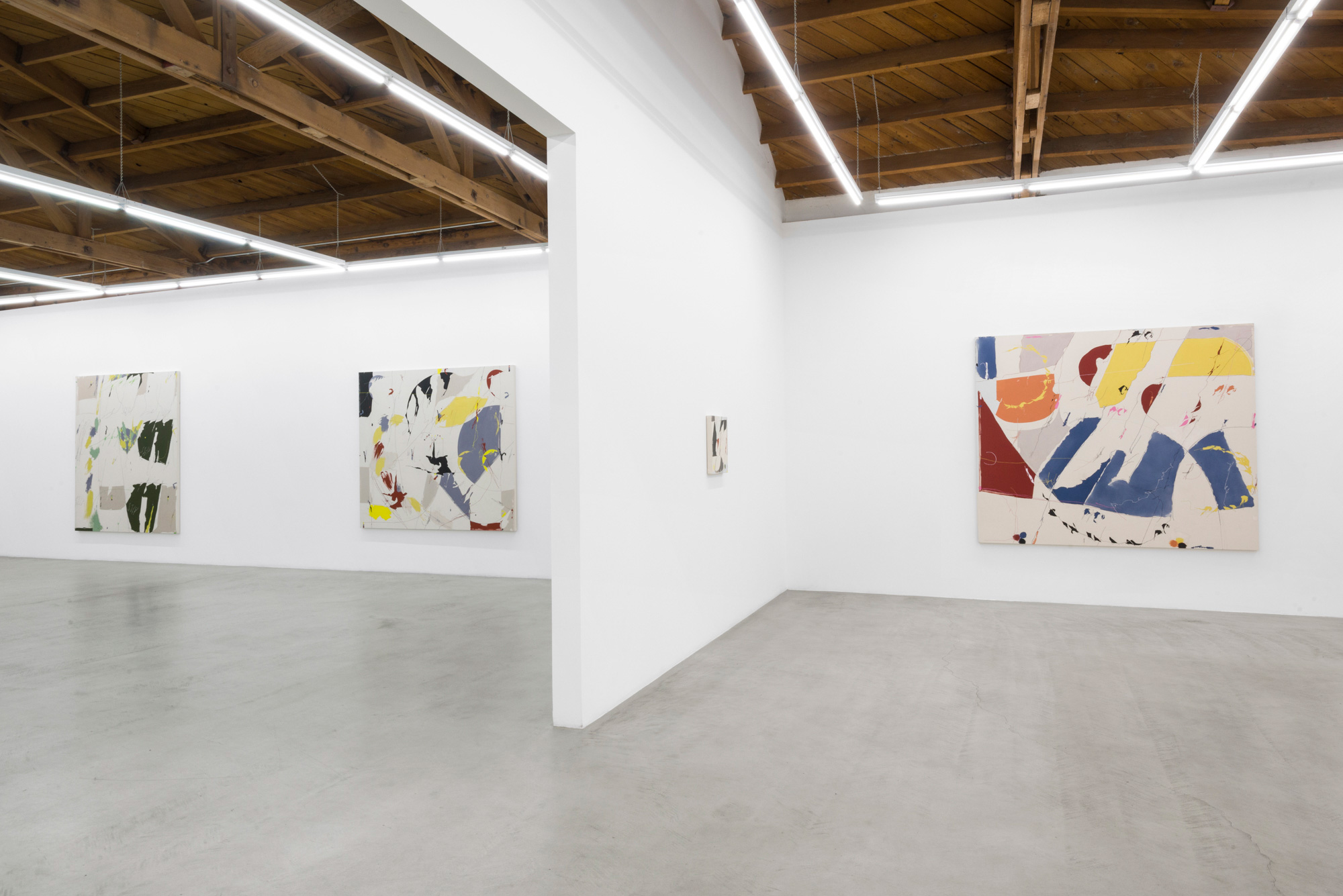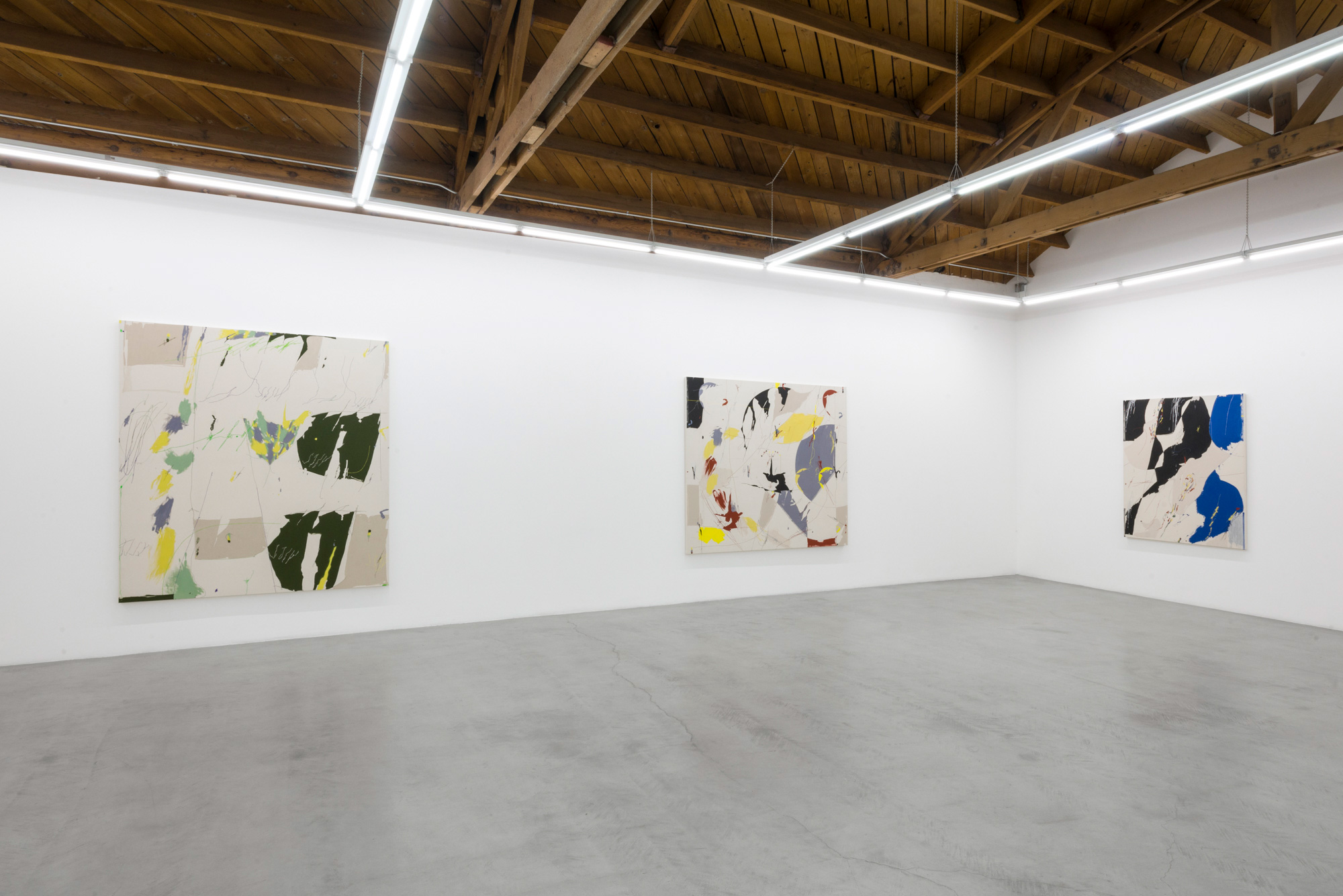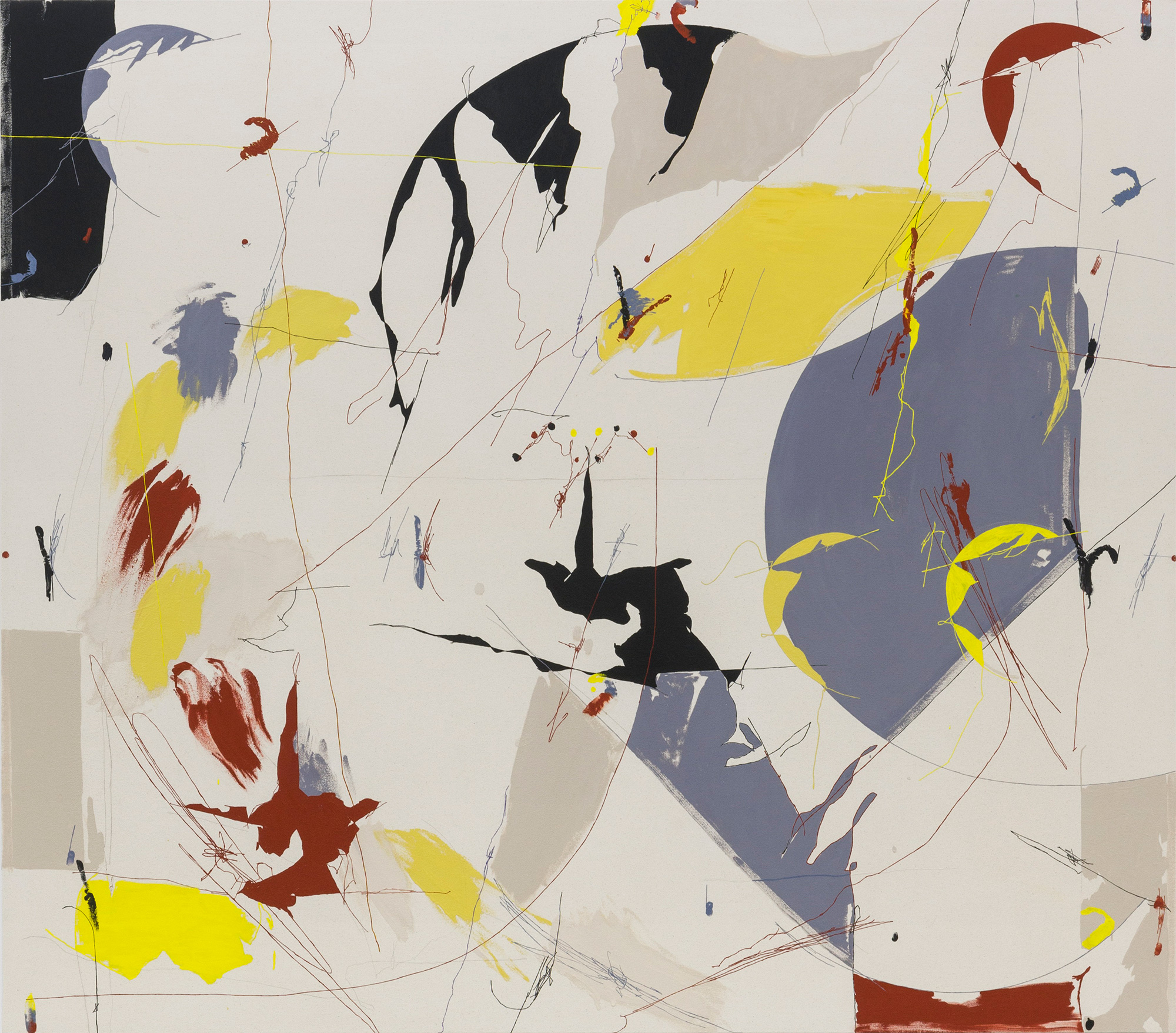Perhaps it’s by default, reverence, or sentiment that we think of the progenitors of an art movement as having more difficult challenges than those who maintain it. But artists in the lineage of painterly abstraction increasingly face a new kind of problem, which verges on paradoxical: how does an artist advance an aesthetic when the features that defined it are now the very features that make it unimaginative? Artists are almost obligated to make moves that have been drained of vitality and meaning from decades of overuse. The answer is hard to know until you see it, which is why I’ve been following Los Angeles artist Maysha Mohamedi for several years, and why her first solo show at Parrasch Heijnen, Sacred Witness Sacred Menace, deserves attention.
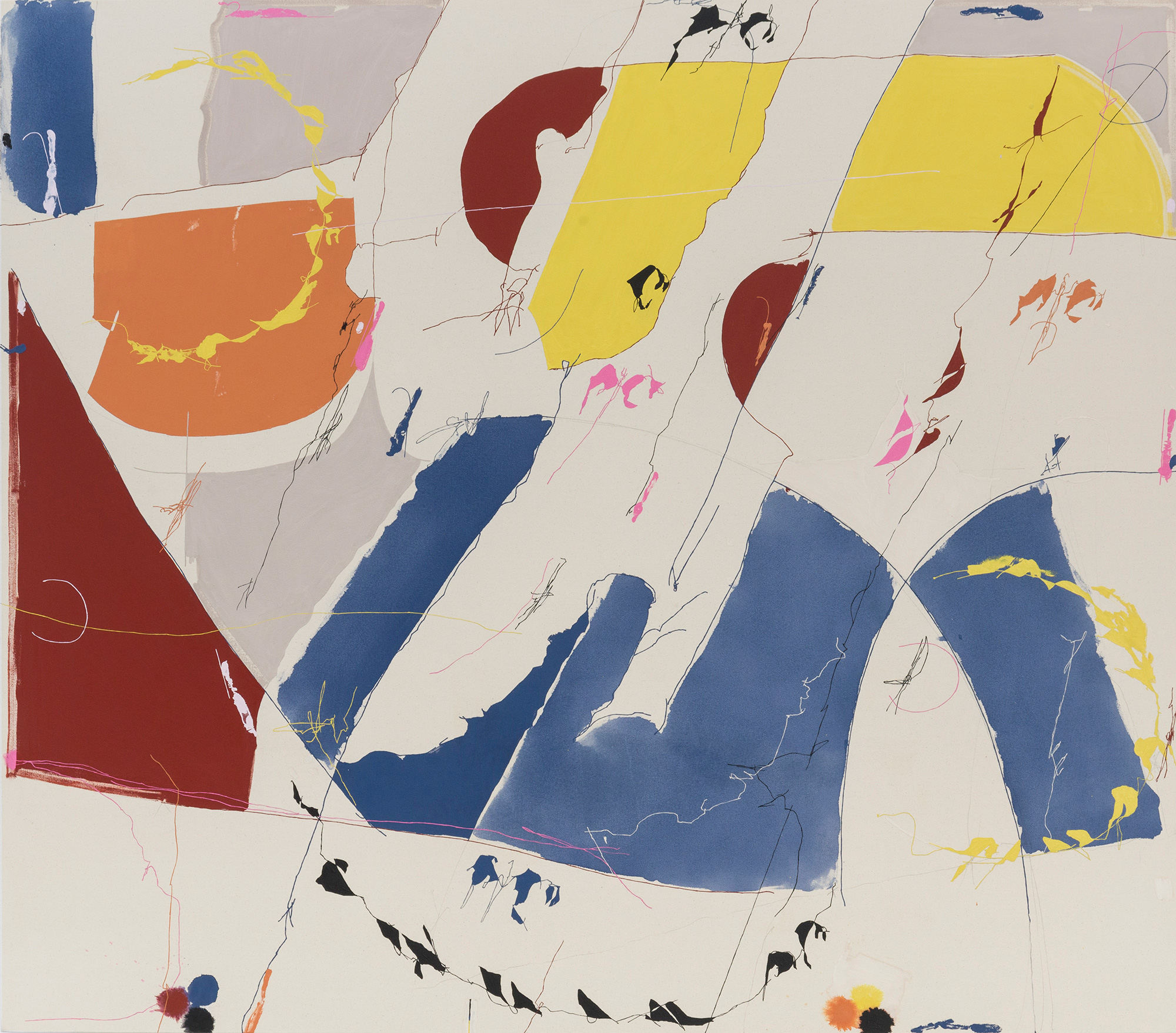
Mohamedi’s faculty for mark-making is just one reason. Bringing an image into existence, and recording the instant it happens, has a certain wonder to it, and it’s part of what made painterly abstraction appealing. But that wonder often degenerates to self-absorption and has attracted a chorus of painters with the same exhausted and one-dimensional mark. Mohamedi’s marks, though, feel ambiguous and complex; sometimes they feel more like symbols or objects, sometimes both. They function like Cy Twombly’s part-mark, part-language, but in more directions. Sometimes, they even drift away from recording the movement of her hand. Her marks do what abstract painting is uniquely suited to do: refer to the real world without representing it; invite sense-making while withholding certainty. The viewer can phase through feelings and associations without ever knowing what they’re looking at.
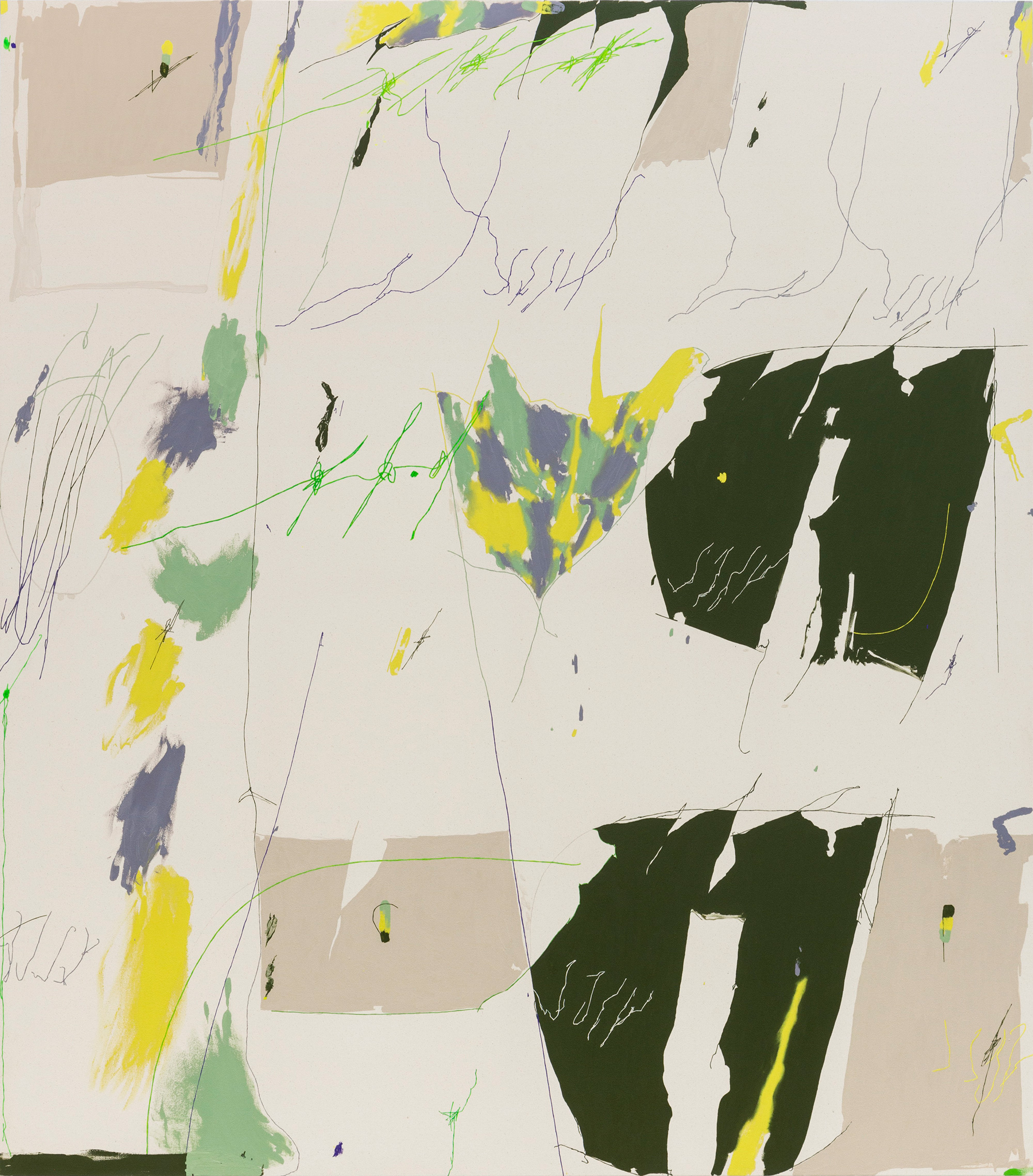
Mohamedi often uses pairs or sequences of incrementally changing marks (or quasi-symbols) to reveal the part of the painting process that’s not on the canvas. By placing nearly identical marks next to each other, Mohamedi places attention on the slight deviations—what’s happening in between the marks. The physical mark still captures something immediate and intimate about the act of creating it, but the implicit is just as present.
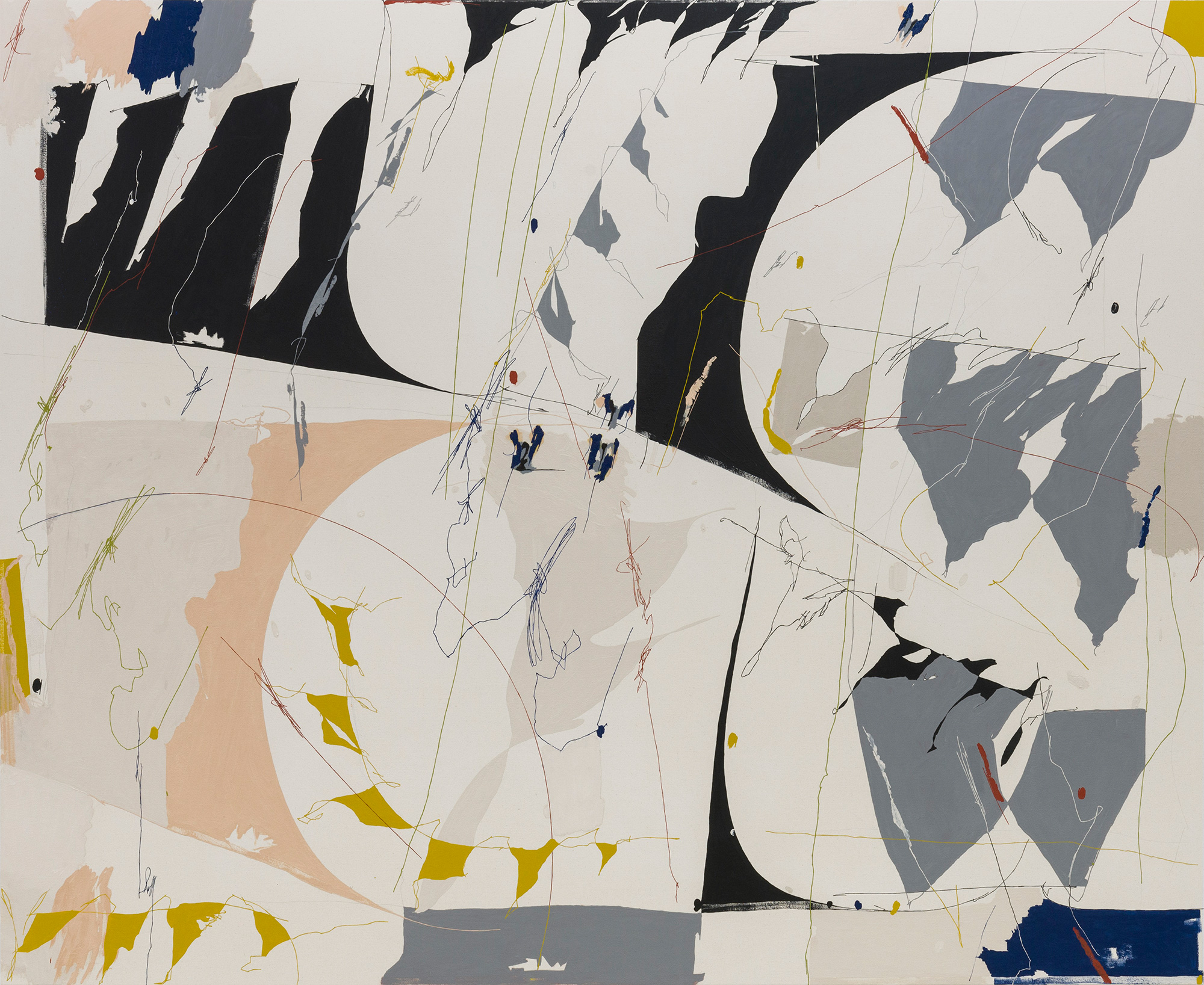
One thing that struck me about the works of Sacred Witness Sacred Menace was how Mohamedi took these qualities—which seem inherent and idiosyncratic to small-scale marks—and extrapolated them to large-scale compositional elements. In Cool Dreams Dropped Into Your Heart (all works 2021), for example, many of the solid-shaped elements have features within them that vaguely repeat and, as a whole, those elements vaguely mimic others in the painting. They also take on small-scale qualities because their edges seem carved from quick movements, like handwriting or sketching, even though they’re large and created slowly by filling in the shape with paint. And the fact that the large elements share certain qualities with smaller marks and sequences conflates the experience of each. The way the mind interprets smaller marks changes how larger elements are interpreted.
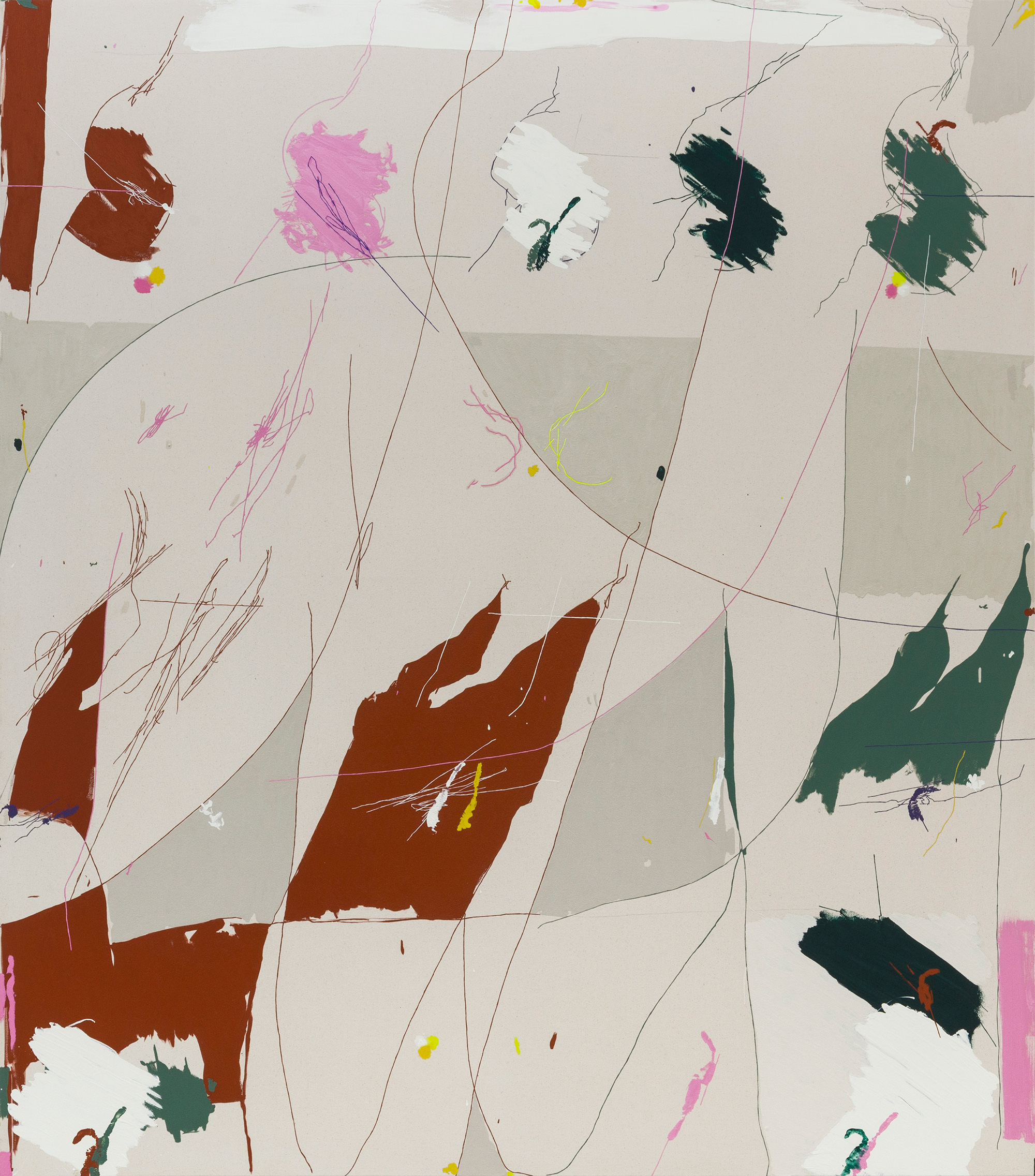
Mohamedi has also subtly worked body movement into these paintings. Most of her compositions hang on a scaffolding of long, thin lines and wide arcs, almost like a wireframe Motherwell. It might be hard to sense by looking at these large paintings on a screen, but when standing in front of them, the scale and quality of those lines and arcs imply a sense of body movement, especially when they swoop, repeat, or span the entire canvas.
But it’s not body movement in the traditional sense. Normally, with large-scale records of movement like this, the expectation is thick and painterly marks, or fast and continuous movement, or even lines that record the breath or wavering of the artist’s hand. Mohamedi’s lines, though, are wiry and segmented, patched together from small applications of paint, which, after they’re added up, suggest a larger gestural move. There’s only a phantom physicality, a schematic of movement without all of the usual seriousness and self-importance of huge gestural marks.
In the paintings of Sacred Witness Sacred Menace, Mohamedi has harmonized that “phantom physicality” with the small-scale sequences and other repeating elements. She’s conducted what would otherwise be cacophony of sketch marks into a ragged musicality; a scratchy galloping of unraveling rhythms, a tumbling of intimate moments.
Whereas the forebears of painterly abstraction might have sought a more uniform aesthetic, or a purer visual language (in this case, Clyfford Still, Robert Motherwell, and Lee Krasner come to mind), Mohamedi can achieve more complicated effects like this because of her decision (and ability) to devise and orchestrate disparate elements. Features of one element warp the experience of another, and the painting becomes more than the sum of its parts.
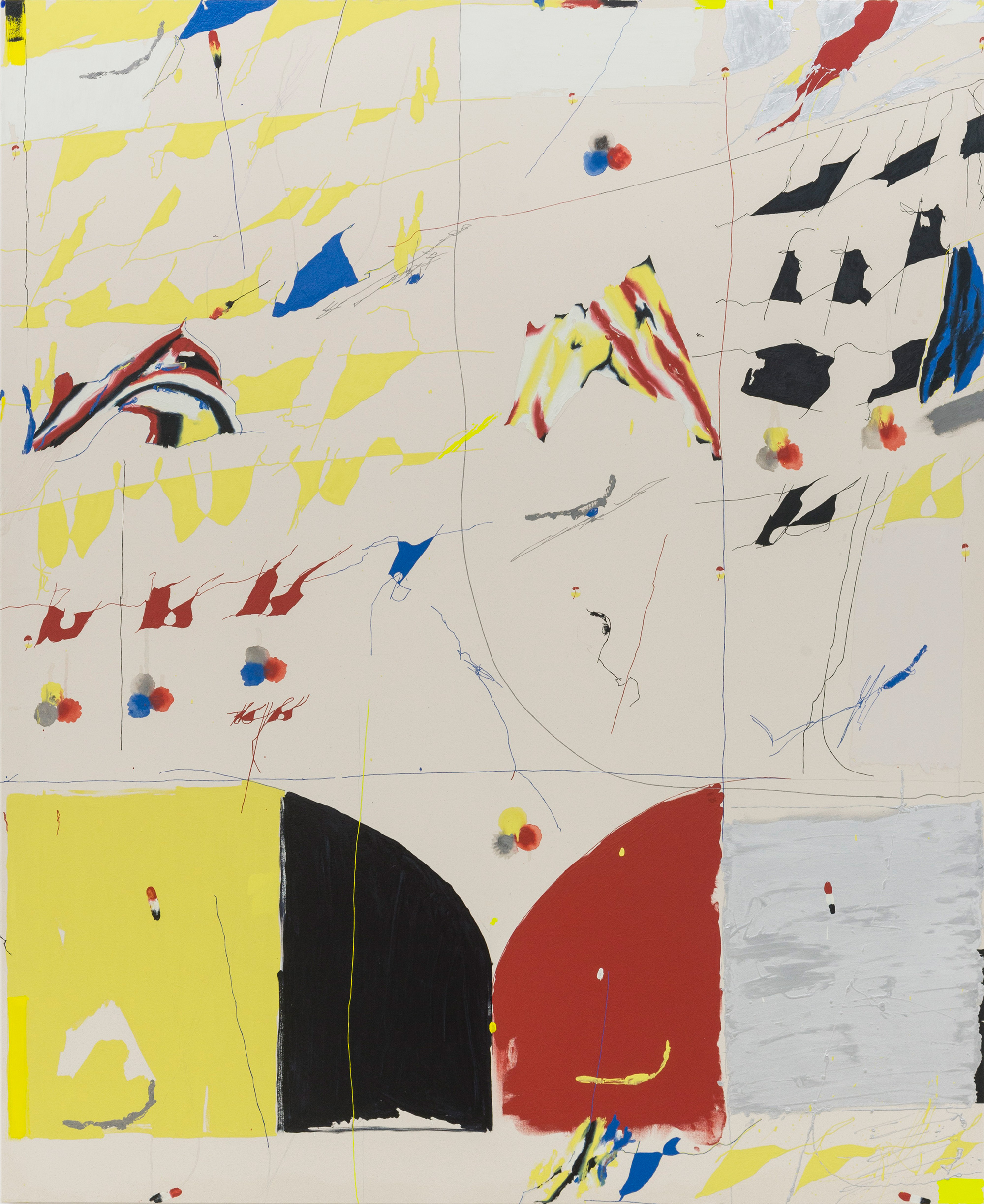
Sacred Witness Sacred Menace also raises the question of how far an artist can move away from some of a tradition’s inherent qualities while remaining a part of that tradition. One of those inherent qualities, for instance, is the painting being a record of its creation. Many aspects of Mohamedi’s paintings refer to it: brush marks are left as-is; lines have a sketchy quality; underlying pencil marks and canvas remain exposed; solid features are sometimes only partially painted; repeated elements suggest time; and primary colors suggest nascence. But she does not always leave these features in their raw or immediate state. For example, she will trace over pencil marks with a thin line of paint, removing the original quality of the pencil mark. Or she will paint over canvas with a flat, near-canvas color. Even her marks sometimes mask the trace of her hand. With moves like this, Mohamedi simultaneously denatures and exalts features of the painting, maybe even the process of painting itself. She takes the principle of “to observe something is to change it” and applies it to the standardized moves of painterly abstraction.
This exalt/denature move, and others like it, risk creating flat and texture-less images instead of something that can only be made with paint, but they’re necessary if an artist wants to advance the aesthetic, further our understanding of painting, or renew our experience of it. Mohamedi, with her phantom physicality and denatured marks, guides us through an uncanny valley of painterly abstraction, but the risks pay off.




